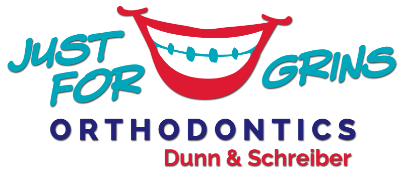Have you considered getting dental veneers? Veneers are becoming more popular lately – with a number of celebrities, reality TV stars, and ‘influencers’ sporting beautiful veneer smiles!
How do you know if veneers are right for you too? Are veneers a quicker alternative to braces?
It’s true that both braces and veneers are highly-effective, highly-transformative treatment options – but they aren’t necessarily interchangeable. Veneers can’t treat orthodontic conditions, and braces can’t fix cosmetic conditions (like cracks or chips in the teeth).
The best treatment for your case will depend on your goals. Here’s what you need to know in order for you to choose the right treatment, dental veneers or braces.
What are dental veneers?
Dental veneers are tooth-colored shells or covers that mimic a natural tooth. A dentist attaches a veneer on the front surface of a tooth to fix cosmetic concerns, such as cracks or chips in the teeth, discoloration, or irregular shape/size.
Veneers are typically made out of a porcelain or resin material, and they’re designed to look identical to a healthy natural tooth.
Braces Vs. Veneers
The main difference between braces and veneers (in terms of how these treatments improve the smile) is that dental veneers are cosmetic, whereas braces are foundational or structural.
Dental veneers will improve blemishes and textural issues to change the appearance of the smile, but braces change the structure of the smile – from the jaw bones to the crowns of the teeth – which, in turn, improves the appearance of the smile.
For this reason, veneers and braces have two very different jobs. Conditions that are purely cosmetic and don’t require any changes in the positions of the teeth or jaw bones can be covered with a dental veneer. Conditions that originate in the jaw position or dental alignment should be taken care of by one of our experienced orthodontists, Dr. Dunn or Dr. Schreiber!
Should I get veneers or braces?
The best treatment option for you will depend on your specific concerns about your current smile and your goals with treatment. There are pros and cons to all treatment options (like most things in life), so it’s important that you know the facts before you make a decision.
While dental veneers and braces are both highly effective treatment options to help people regain confidence in their smile, there are situations or conditions that are best treated with veneers – and conditions that would benefit more from a personalized orthodontic treatment plan from Just for Grins Orthodontics.
Situations where a dental veneer may be the best solution:
- You have a chipped or cracked tooth or teeth
- You have a discolored tooth or teeth
- Your teeth are worn down
- Your teeth are discolored
- You have irregularly shaped teeth: some teeth are smaller or have an abnormal shape
Situations where braces or Invisalign may be the best solution:
- You have a bite misalignment: overbite, underbite, open bite, cross bite
- You have gapped teeth or spaced teeth
- Your top and bottom teeth don’t meet in the front or back properly
- You have crooked or crowded teeth
- You have functional issues: pain or difficulty chewing or biting
For situations that require more than a cosmetic fix, a full treatment of braces or Invisalign (for teens and adults) is likely the more sustainable solution in the long run. Orthodontic treatment is intended to create results that last a lifetime. As long as you wear your retainer as instructed, you should be able to enjoy your beautiful smile for the rest of your life – no additional treatment necessary!
Of course in situations where the appearance of a tooth (color, size, texture) is the concern, dental veneers can cover discoloration or chips, or add length to a tooth to restore the smile.
How long do veneers last?
On average, dental veneers last for about 10 years before they need to be replaced, but they can last longer with excellent care. If your veneer wears down early on, or you chip or crack the veneer, you may require a replacement sooner than 10 years.
Veneers are porcelain and can shatter from excessive pressure, so it’s important to be cautious when chewing and biting into food with veneers.
Veneers are not permanent, but they are also not reversible. In order to attach veneers to your teeth, your dentist will have to shave down a portion of your enamel to allow enough space for the veneer material to fit.
Unfortunately, enamel does not regenerate on its own. Once it’s destroyed, it’s gone for good! Because the enamel is the protective barrier for the teeth, when the enamel is destroyed, it leaves the teeth vulnerable to damage and tooth decay.
Can I get veneers instead of braces?
Veneers cannot replace the need for braces, and vice versa. Both treatments play different roles in repairing the appearance of the smile. If you have a common orthodontic problem and require orthodontic treatment, dental veneers will not be a sufficient solution.
Misalignments in the teeth originate in the jaws. In cases where the upper jaw bone is too narrow to fit all teeth in a healthy alignment, this can cause the teeth to overlap and crowd each other. Simply placing veneer shells over crowded teeth or using them to fill in gaps that are the result of a jaw bone misalignment will not treat the source of the problem.
All of the challenging symptoms that come with dental misalignments (difficulty chewing food, jaw pain or popping, speech difficulties) will still be present if they aren’t corrected. Braces and Invisalign can correct these conditions, treat them at the source, and result in a beautifully balanced smile.
The Bottom Line: Braces Vs. Veneers
Consider the long-term and short-term effects of both treatment options before making your decision. While braces are temporary and will be removed after your treatment period (on average, between 12 and 18 months), dental veneers will be in place for about a decade and cannot be removed to restore your natural smile.
The procedure necessary to attach veneers requires irreversible changes to your enamel. Due to the permanence of veneers, these treatments should be looked at as more of a last resort if orthodontics cannot solve the problem.
With braces or Invisalign, you may undergo treatment for a little over a year (depending on your personalized treatment plan), and then your natural smile is yours to keep for a lifetime! With veneers, the process to place them won’t take long – but you’re looking at a lifelong treatment process to maintain and eventually replace your veneers.
According to the American Dental Association, you can expect to pay between $925 and $2,500 per tooth for veneers – and they’ll eventually have to be replaced at the same cost. Orthodontic treatment, on the other hand, may cost the same as only two veneers (plus, we have affordable payment plans and work with all insurances to help you cover the cost of braces!)
The bottom line is – if your condition is treatable with braces, you may be saving yourself money, saving your enamel, and you’ll be treating the source of your misalignment to create a beautiful new smile by choosing braces.
Still have questions about braces or veneers?
If you still aren’t sure whether braces or veneers are best for your case, we encourage you to request a complimentary consultation with us. One of our experienced orthodontists will examine your smile, explain your condition to you in detail, and help you make a decision that will benefit you for a lifetime.
Please don’t hesitate to reach out to us with any questions! Request your complimentary exam with us in Montgomery, Millbrook, or Wetumpka today.

